
Andrew II, also known as Andrew of Jerusalem, was King of Hungary and Croatia between 1205 and 1235. He ruled the Principality of Halych from 1188 until 1189/1190, and again between 1208/1209 and 1210. He was the younger son of Béla III of Hungary, who entrusted him with the administration of the newly conquered Principality of Halych in 1188. Andrew's rule was unpopular, and the boyars expelled him. Béla III willed property and money to Andrew, obliging him to lead a crusade to the Holy Land. Instead, Andrew forced his elder brother, King Emeric of Hungary, to cede Croatia and Dalmatia as an appanage to him in 1197. The following year, Andrew occupied Hum.

Stephen V was King of Hungary and Croatia between 1270 and 1272, and Duke of Styria from 1258 to 1260. He was the oldest son of King Béla IV and Maria Laskarina. King Béla had his son crowned king at the age of six and appointed him Duke of Slavonia. Still a child, Stephen married Elizabeth, a daughter of a chieftain of the Cumans whom his father settled in the Great Hungarian Plain.
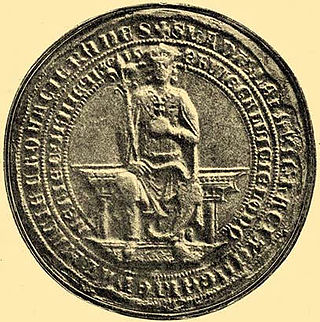
Ladislaus IV, also known as Ladislaus the Cuman, was King of Hungary and Croatia from 1272 to 1290. His mother, Elizabeth, was the daughter of a chieftain from the pagan Cumans who had settled in Hungary. At the age of seven, he married Elisabeth, a daughter of King Charles I of Sicily. Ladislaus was only 9 when a rebellious lord, Joachim Gutkeled, kidnapped and imprisoned him.

Béla I the Boxer or the Wisent was King of Hungary from 1060 until his death. He descended from a younger branch of the Árpád dynasty. Béla's baptismal name was Adalbert. He left Hungary in 1031, together with his brothers, Levente and Andrew, after the execution of their father, Vazul. Béla settled in Poland and married Richeza, daughter of Polish king Mieszko II Lambert.
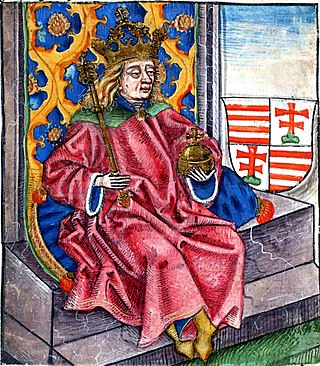
Béla IV was King of Hungary and Croatia between 1235 and 1270, and Duke of Styria from 1254 to 1258. As the oldest son of King Andrew II, he was crowned upon the initiative of a group of influential noblemen in his father's lifetime in 1214. His father, who strongly opposed Béla's coronation, refused to give him a province to rule until 1220. In this year, Béla was appointed Duke of Slavonia, also with jurisdiction in Croatia and Dalmatia. Around the same time, Béla married Maria, a daughter of Theodore I Laskaris, Emperor of Nicaea. From 1226, he governed Transylvania as duke. He supported Christian missions among the pagan Cumans who dwelled in the plains to the east of his province. Some Cuman chieftains acknowledged his suzerainty and he adopted the title of King of Cumania in 1233. King Andrew died on 21 September 1235 and Béla succeeded him. He attempted to restore royal authority, which had diminished under his father. For this purpose, he revised his predecessors' land grants and reclaimed former royal estates, causing discontent among the noblemen and the prelates.

Emeric, also known as Henry or Imre, was King of Hungary and Croatia between 1196 and 1204. In 1184, his father, Béla III of Hungary, ordered that he be crowned king, and appointed him as ruler of Croatia and Dalmatia around 1195. Emeric ascended the throne after the death of his father. During the first four years of his reign, he fought his rebellious brother, Andrew, who forced Emeric to make him ruler of Croatia and Dalmatia as appanage.

Andrew I the White or the Catholic was King of Hungary from 1046 to 1060. He descended from a younger branch of the Árpád dynasty. After he spent fifteen years in exile, an extensive revolt by the pagan Hungarians enabled him to take the throne from King Peter Orseolo. He strengthened the position of Catholicism in the Kingdom of Hungary and successfully defended its independence against the Holy Roman Empire.

Béla the Blind was King of Hungary and Croatia from 1131 to 1141. He was blinded along with his rebellious father Álmos on the order of Álmos's brother, King Coloman of Hungary. Béla grew up in monasteries during the reign of Coloman's son Stephen II. The childless king arranged Béla's marriage with Helena of Rascia, who would become her husband's co-ruler throughout his reign.

Stephen II, King of Hungary and Croatia, ruled from 1116 until 1131. His father, King Coloman, had him crowned as a child, thus denying the crown to his uncle Álmos. In the first year of his reign, Venice occupied Dalmatia and Stephen never restored his rule in that province. His reign was characterized by frequent wars with neighbouring countries.
Levente was a member of the House of Árpád, a great-grandson of Taksony, Grand Prince of the Hungarians. He was expelled from Hungary in 1031 or 1032, and spent many years in Bohemia, Poland and the Kievan Rus'. He returned to Hungary, where a pagan uprising was developing around that time, in 1046. Levente remained a devout pagan, but did not hinder the election of his Christian brother, Andrew I as king.

Ladislaus II or Ladislas II was King of Hungary and Croatia between 1162 and 1163, having usurped the crown from his nephew, Stephen III.
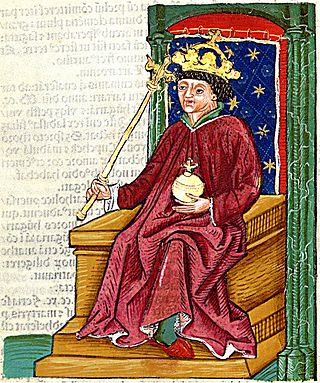
Andrew III the Venetian was King of Hungary and Croatia between 1290 and 1301. His father, Stephen the Posthumous, was the posthumous son of Andrew II of Hungary although Stephen's older half brothers considered him a bastard. Andrew grew up in Venice, and first arrived in Hungary upon the invitation of a rebellious baron, Ivan Kőszegi, in 1278. Kőszegi tried to play Andrew off against Ladislaus IV of Hungary, but the conspiracy collapsed and Andrew returned to Venice.
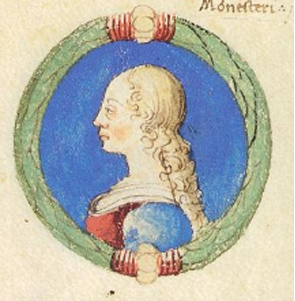
Beatrice d'Este was Queen consort of Hungary as the third wife of King Andrew II of Hungary.

Tomasina Morosini was a 13th-century Venetian noblewoman and member of the powerful Morosini family. She was the mother of Andrew III, the last king of Hungary from the Árpád dynasty. After his son's accession to the throne, she moved to Hungary in 1292, where she served as Duchess of Slavonia until her death.
Géza was a Hungarian royal prince and the youngest son of the King Géza II of Hungary. Prince Géza was brother to the Kings Stephen III and Béla III of Hungary. He was a pretender to the Hungarian throne against Béla III, but he was imprisoned from 1177 to 1189. He traveled to the Holy Land during the Third Crusade with an army of 2,000 Hungarian warriors.

Ladislas the Bald was a member of the House of Árpád, a grandson of Taksony, Grand Prince of the Hungarians. He is the only known brother of Vazul, a rebellious duke who was blinded on the order of their cousin, King Saint Stephen I of Hungary in 1031 or 1032. Medieval chroniclers, in their effort to conceal that the Kings of Hungary were descended from a prince condemned by the saintly first king, wrote that instead of Vazul, Ladislas was the Hungarian monarchs' forefather. Ján Steinhübel and other modern Slovak historians write that he was Duke of Nyitra under Polish suzerainty, but this theory has not been universally accepted by historians.
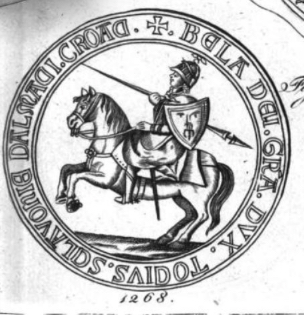
Béla was the youngest and favorite child of King Béla IV of Hungary. His father appointed him Duke of Slavonia in 1260, but he only started to govern his duchy from 1268. He died childless.
Andrew of Hungary was Prince of Galicia–Volhynia between 1227 and 1230, and between 1231 and 1234, and Prince of Zvenyhorod in 1226.
Andrew, Duke of Slavonia was the youngest son of King Stephen V of Hungary and his wife, Elizabeth the Cuman. Two rebellious lords kidnapped him in 1274 in an attempt to play him off against his brother, Ladislaus IV of Hungary, but the king's supporters liberated him. He was styled "Duke of Slavonia and Croatia" in a 1274 letter. Years after his death, two adventurers claimed to be identical with Andrew, but both failed.
Lampert from the kindred Hont-Pázmány was a Hungarian powerful lord at the turn of the 11th and 12th centuries, who was related to the ruling Árpád dynasty by his marriage. He was one of the richest aristocrats of the kingdom during that time. He founded a Benedictine abbey near Bozók.














